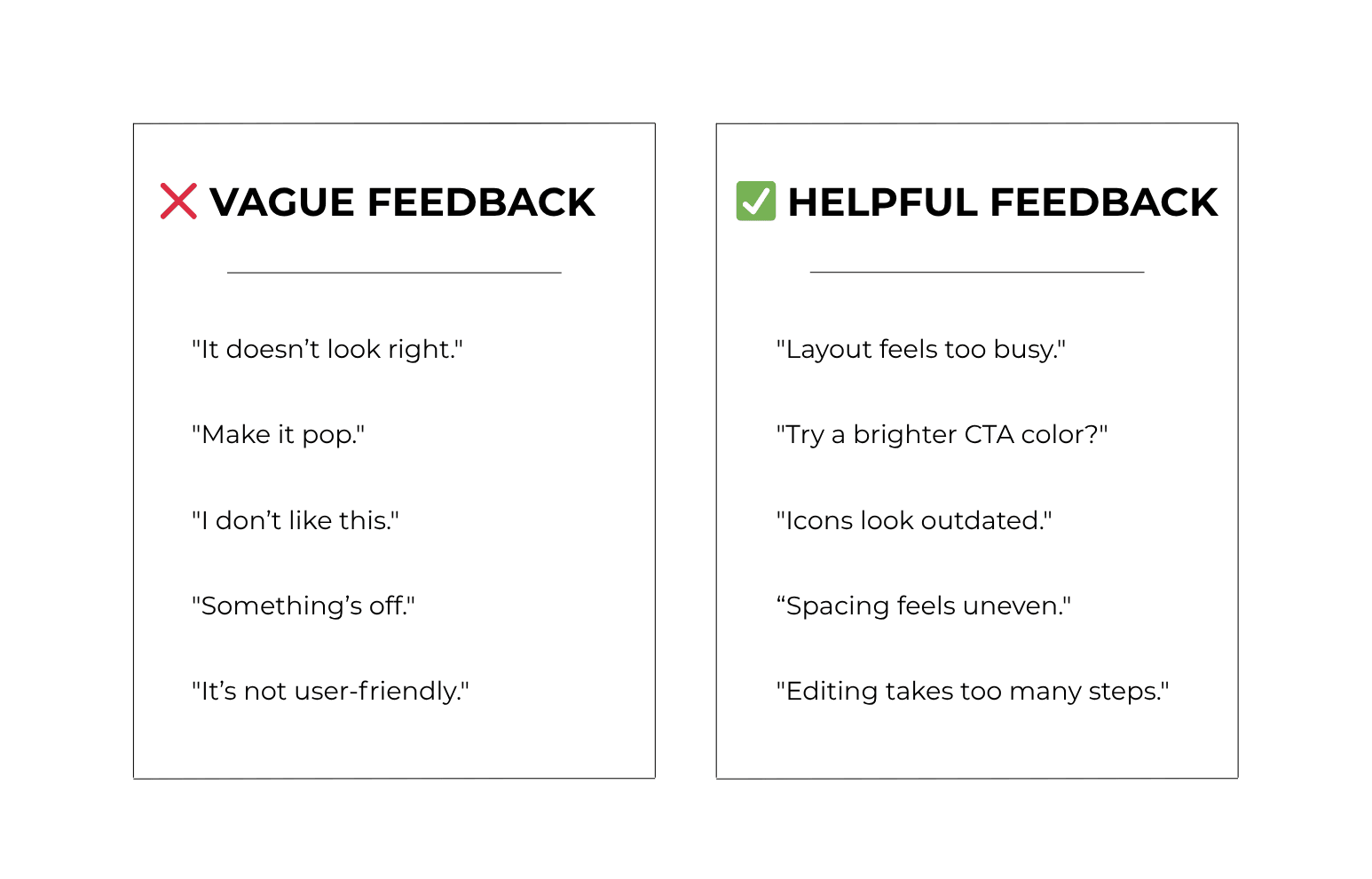Tips for Clients: How to Give Feedback That Helps Your Dev Team

About us
MoldoWEB is a software development company, located in Romania, specialized in providing outsourcing and team augmentation services for clients around the world.
Table of contents
- Why Feedback Matters in Software Development
- When to Give Feedback (Timing Matters)
- How to Give Effective Feedback
- Common Mistakes to Avoid
- Conclusion
So, you finally found a great software provider to bring your project to life, and have everything planned out to build a successful product. But did you know that well-crafted feedback and collaborative software development can significantly increase the chances for success? These lie at the base of any successful project. Giving feedback is important, but not just any feedback; the right one. The one that helps your team work better together and fix any issues.
In today’s blog post, we will talk about the importance of the right feedback, then we’ll go through some of the key steps on how to provide valuable feedback to your software team, along with some common mistakes to avoid.
Why Feedback Matters in Software Development
As a software development team working on various projects with clients from all over the world, we know how important feedback is in a software project. We’re not mind readers, and even with the best communication, sometimes things can get lost in translation. So, ongoing collaboration and feedback are necessary for us to understand the client’s goals and to make sure we’re aligned with them.
Good and frequent feedback can also save days or even weeks of rework. It keeps the project on track and helps your development team make better decisions. Waiting until the project wraps up, or even worse, until launch, to provide feedback is not the way to go, as it’s not helpful.
And let’s not forget that development is all about small trade-offs: design vs. performance, deciding between feature A or feature B, speed vs. scalability, etc. When you provide feedback, you help your team understand what’s most important to you and guide them in that direction. Long story short: better feedback=better product. Adjusting things early is much easier than redoing something completely.

When to Give Feedback (Timing Matters)
There are no set-in-stone rules on when you should give feedback to your team, but basically, the sooner, the better. If something feels off, say it early. Most of the heavy lifting happens in the early stages of a software project. So, if there is something you want to change, maybe a feature isn’t what you expected, make sure to communicate that to your team, as later it can be more difficult and costly to redo it.
The most important times to give feedback, however, are the following:
-After your team sends over the wireframes, mockups, or early designs
-During sprint demos or review calls
-Whenever you notice something that doesn’t match what you agreed on with the team
-When your business goals or priorities change during development
Let’s look at an example: you team up with developers to build a dashboard for your company, and they show you a preview in week 3. That is still in the early development stage, and whatever you need changed or fixed, it can be done easily. So, this is the time to review everything thoroughly and give your input. Waiting until launch might result in a complete rebuild, not just a tweak.
You don’t have to think pixel-perfect feedback right away; even giving some direction helps. A quick “This layout feels too busy” or “Can we move that button closer to the table?” is already useful. Again, it’s way easier to fix small things as we go than to do surgery later.
If you don’t offer early or any project feedback at all, your team will assume everything is on the right track. So make sure to share if there is anything that’s bothering you. No need for anything official, just a quick message or a comment, whatever works. Your team would rather hear it from you than guess.
How to Give Effective Feedback
Your team wants your feedback. But not all feedback is useful. There is a huge difference between “this doesn’t look right” and “can we try a simpler layout with fewer colors?”.
Here are some tips that can help offer valuable feedback in project management:
Be specific: When you find an issue with the product, simply saying “this doesn’t work” doesn’t tell your team much. Instead, give as many details as you can to help your team understand the issue, so they can fix it. So, keep in mind that sharing details is the key.
Use real examples: A screenshot, quick Loom videos are always better than a long paragraph when it comes to project feedback.
Prioritize: Your team wants you to share your opinions and feedback, but it’s important to make a difference between what’s a priority and what is just a nice-to-have. We should focus on the core product and features first, and then the rest.
Explain the why: If your team knows the reasoning behind why something matters, they can suggest better solutions. Maybe there is a faster or cleaner way to get the same results.

Common Mistakes to Avoid
In our experience as a software development team, the biggest issue we run into is feedback that comes too late. Going back and fixing something after launch means a lot of rework, extra effort, and costs.
The next one is giving vague feedback and leaving the team guessing. When you say things like “can you make it more modern?” or “this doesn’t feel right”, chances are, your team won’t know exactly what you’re referring to. They don’t expect you to know all the technical terms, but adding in some examples will help much more than broad statements.
We also see sudden changes in direction without any context. That’s a tricky one, because it’s okay if your priorities change, but if you add new requirements mid-spring without any explanation, that can throw the whole roadmap off. Your team supports your goals and priorities, but make sure they understand what’s changed and how to move forward.
When you have multiple communication channels with your team, avoid scattering your feedback across all of them. Try to stick to one channel; there is less chance for something to get missed.
Conclusion
Collaborative software development is based on honest, timely, and clear communication. For the project to stay on track, it’s important to give valuable feedback, telling your team what’s working, what’s not, and why.
Good feedback saves time, costs, and helps your team build something you’ll actually be happy with. So, when in doubt, say something. Even a quick, messy note can be better than silence, and it will help you and your team stay on the same page and work better together.



